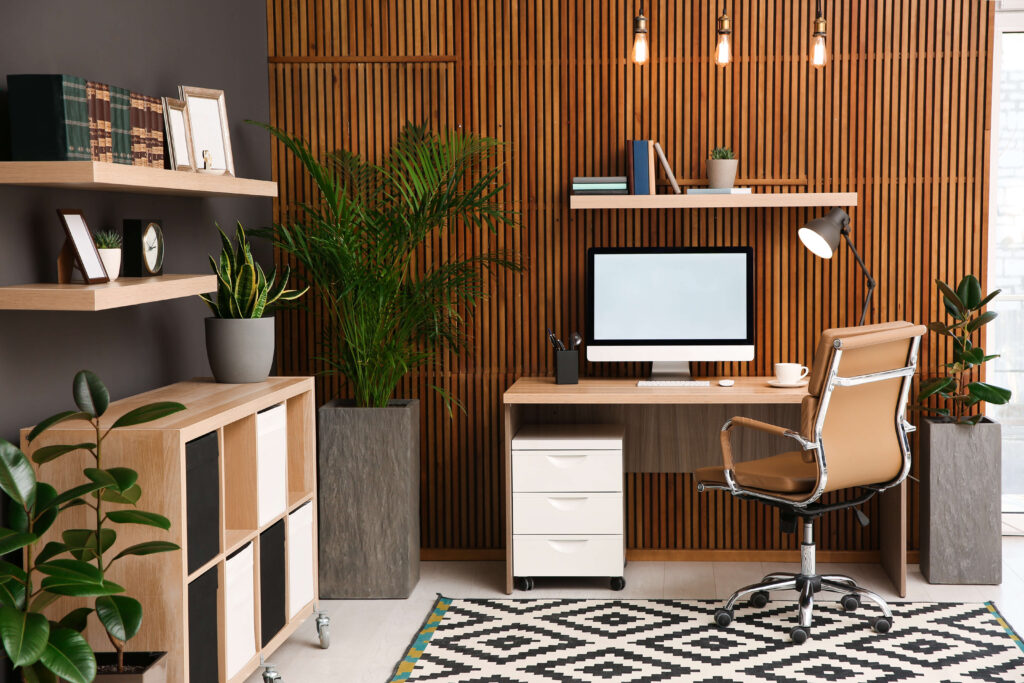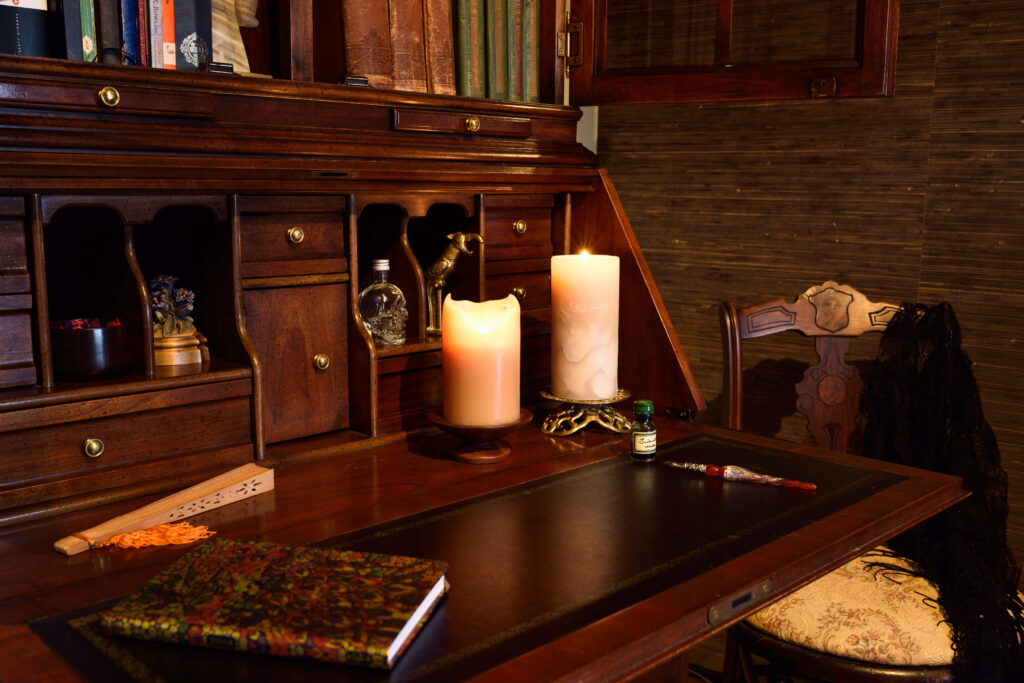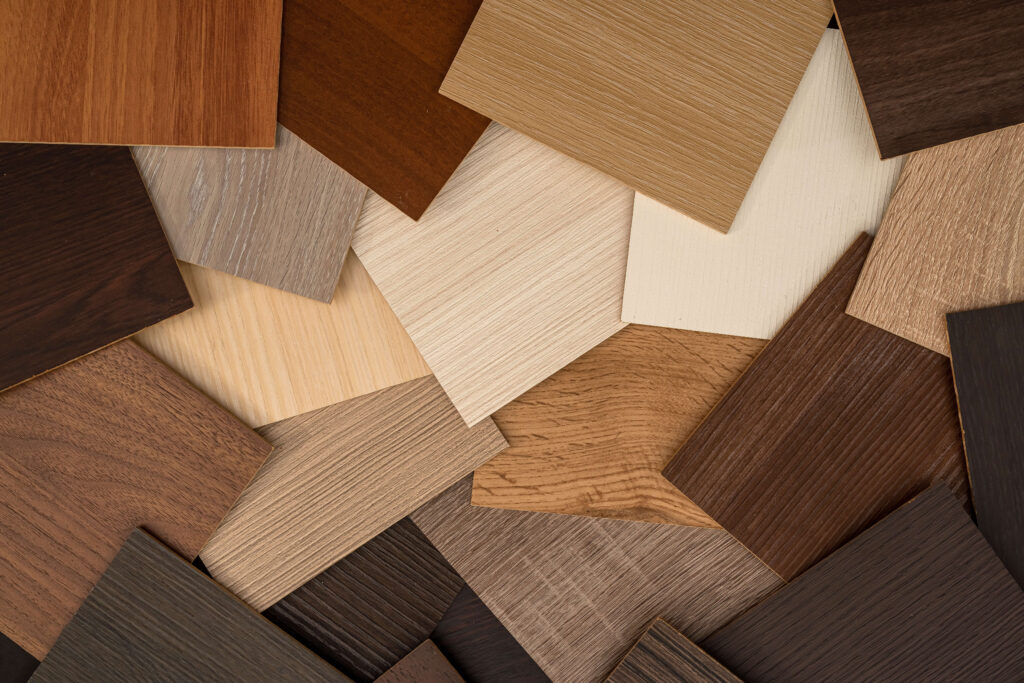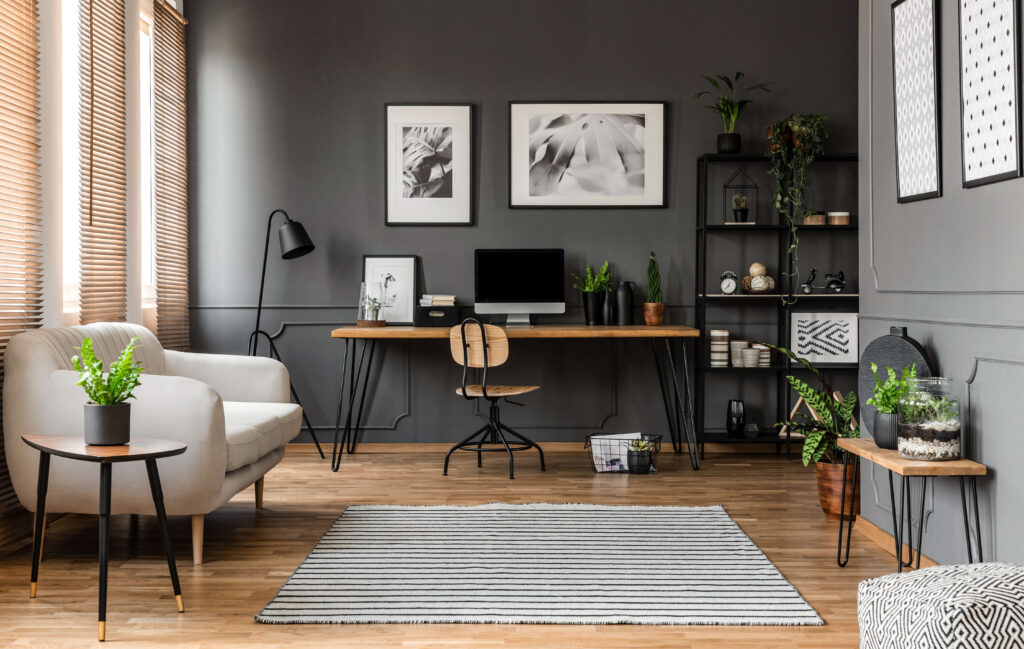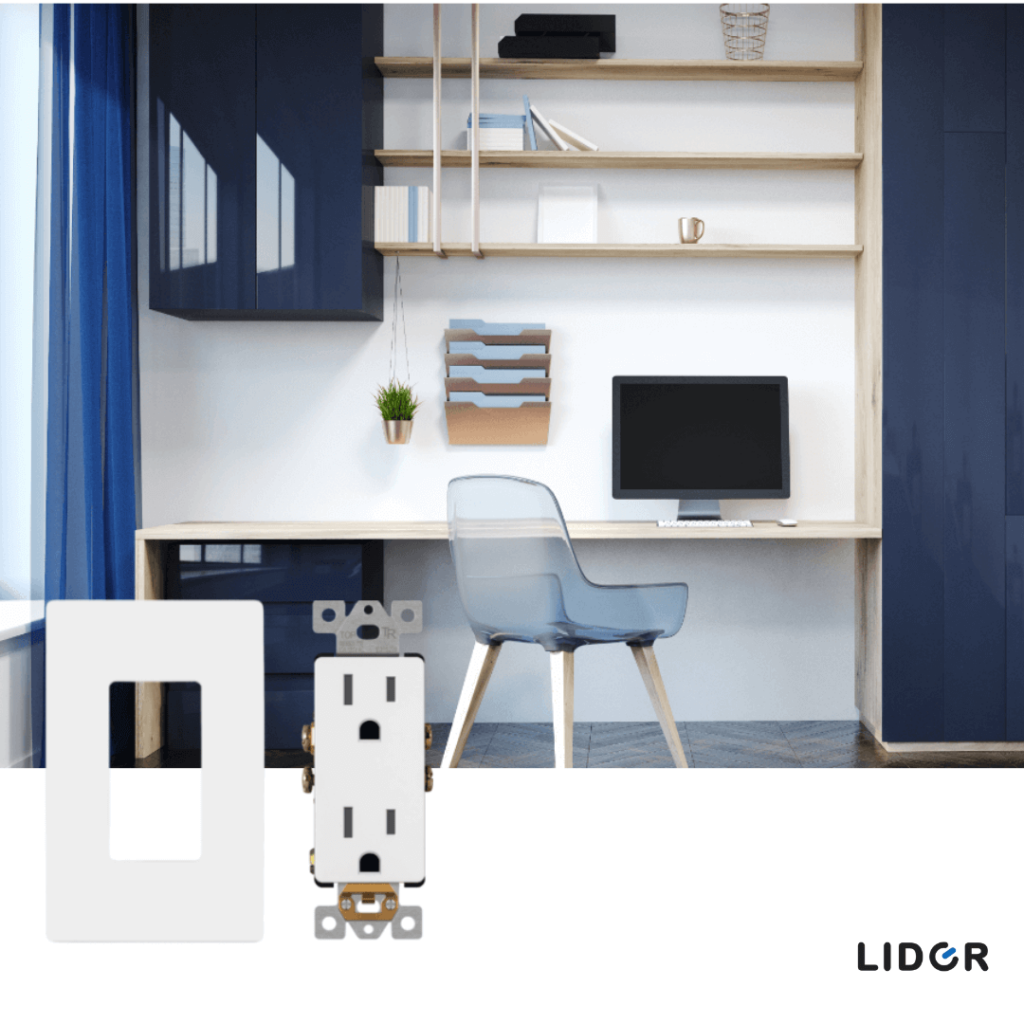A proper desk to work at is not only a necessary component of the home office, but it can create a potent statement in the room. It can establish a sense of authority, professionalism, or solitude. The home office has become a staple of modern society. For many, a home office is a sanctuary to focus on important matters, and having a fitting desk for that purpose can make all the difference.
The history of the home office and its work desk are understandably intertwined. Though it’s near impossible to figure out when the desk was invented, it reached the height of popularity in the Medieval era. At the time, only the nobility used office desks to write letters in their libraries or drafting rooms. Certain jobs like scribes and writers also needed them to do their work. Most citizens were illiterate and did not need either a study or a desk of this nature. It wasn’t until the Industrial Revolution that offices and desks became more common.
As the Industrial Revolution surged in the 1800s, factories began manufacturing products in droves. Accordingly, work shifted from the home into factories or office building settings to accommodate. This was only exacerbated by zoning laws in the 19th and 20th centuries. They stated that manufacturing and processing were too noisy for residential areas and banned them. The home office was mostly irrelevant outside of the creative sphere after this.
It wasn’t until the 1980s that things shifted once more. The increase in personal computers and portable phones made it simple to take work home and reestablished the home office setting.
Today, working from home has become all the more frequent as a result of the coronavirus pandemic which swept the nation almost three years ago. Everyone had to put together a home office setting, and some still use them today.
Many companies have not returned to the office yet, while others allow permanent remote status. There are many statistics about the benefits of remote work on employee productivity and satisfaction. Remote workers have expressed continued interest in work-from-home, so it may be here to stay long term. With this in mind, it’s important to have a functional home office setup that reflects your personal style.
Work Desk Varieties For Your Home Office
A work desk can act as the centerpiece of a home office setting. There are many shapes, materials, and specialties available. Read on more for details.
Desks come in many shapes and sizes, and coordinating the proper kind with your aesthetic is key. A rectangular desk is the most common and allows a nice spread while keeping things clean and organized. If you’re looking for more space, an L-shaped desk adds plenty of room with a stylistic flair. For an added sense of solitude, consider a corner or peninsula desk that can fit snuggly into one of the corners of your home office. Many shapes are also offered in rounded or specialty cuts to add a unique, organic touch.
The material of an office desk can act as the crux of the entire room’s design. There are multiple kinds, and taking the time to select the right one for you is essential. The prevailing option is wood. It is the most traditional and provides many options–from oak, cherry, to sandalwood. There are many types available and wood offers a unique grain and story. Painting wood can also open further design options.
Finding an antique wood desk is a great way to be environmentally-friendly by choosing a pre-existing piece. Antique pieces also offer well-crafted, original builds.
Additionally, a wooden desktop mounted atop a metal frame will offer a more industrial style. Metal desks are the ultimate utilitarian design. They are more damage resistant than others and show versatility when combined with wood or glass. Glass is used mainly for desktop surfaces and adds a bold, modern touch to any desk. It is extremely light and visually appealing no matter what it’s paired with. Laminate is another material used for desktop surfaces, comprised of plastic with a laminated coating. It is a cheaper alternative to metal that gives your desk practicality above all else.
An important distinction that an office desk offers over something like a table is the capability for storage. Some desks have built-in storage, while others offer a way to store the desk itself. Many desks include drawers, cabinets, or shelves to organize files and critical work content. If you’d like to take up less space with your desk, Murphy or floating desks work great. Murphy desks work similarly to the bed they are named after and share a folding mechanism that allows for easy wall storage. Floating desks are attached directly to the wall, and their intimate size will give your office plenty of extra room. A roll-top desk allows for the best of both worlds; it offers plenty of storage space and has a roll-down hood to secure the desktop surface. It can add a beautifully traditional flair to your room if used properly.
No matter what kind of home office you create, a desk needs a chair to be useful. Chairs come in as many options as desks do. An ergonomic swivel chair achieves a traditional business aesthetic. These chairs come in many styles, such as leather, fabric, or mesh, and usually come with adjustable heights. You can also find a variety of crafted wooden chairs that echo farmhouse or rustic styles if you’d like a unique office style. They sacrifice arms or maneuverability for an attractive yet strong look. Of course, the standing desk is a modern hit that will make chairs obsolete. Their hydraulic system allows you to stand and work at your leisure.
Complementary Home Office Pieces
A home office may be a room of practicality and function, but that doesn’t mean you can’t create a pleasing aesthetic flow throughout the room. Limited furniture options aside, you can still add your style throughout.
An issue many remote workers are facing is the separation between work and home. With an office only a few feet from the rest of your home, it’s easy to blur the line and feel additional stress. One of the best ways to avoid this is to create a lounge area in your office. A couch, some light reading material, plants, and pictures all fit in this section of the room. You can even add some vibrant colors to help affect your mood. When the workday becomes too much this helpful hideaway is all you need.
Storage furniture, when executed well, can add another layer of style to your office. Bookcases work great for long-term storage and come in a variety of styles. A nice wood varnish or coat of paint can improve their aesthetic form and allow them to blend into the theme of your desk and complete the look of the room as a whole. File cabinets, though mainly functional, come in wood and metal options that can match your design process to a tee.
Complementary Colors/Products
As the centerpiece of the room, color customization for your office desk is pertinent. As stated previously, options are abundant thanks to the wood, metal, and laminate materials available. Since desktops are interchangeable, custom styles are a snap. If you are considering complementary color palettes for the room, remember that it should echo a sense of professionalism and productivity. Calmer, more neutral tones like gray or brown will do the trick.
The perfectly designed home office should have stability and longevity in mind. This should include every aspect, even your wiring devices. At Lider, we prioritize a sense of elegance and form in our devices. We have a large catalog of devices with a variety of colors and finishes. Complete the look of your office with Lider’s line of products.

